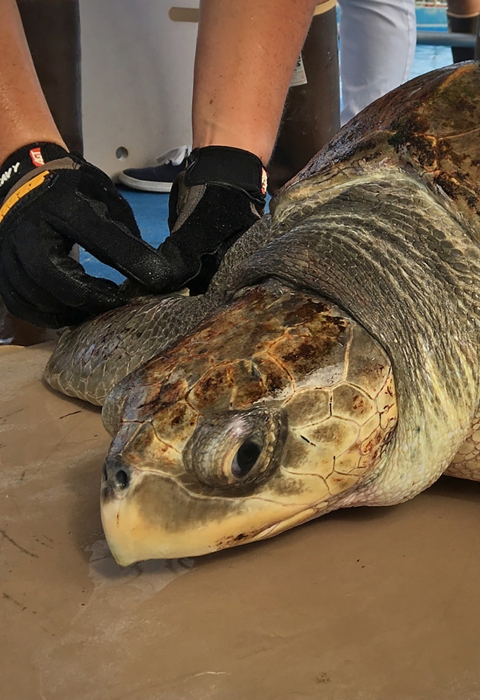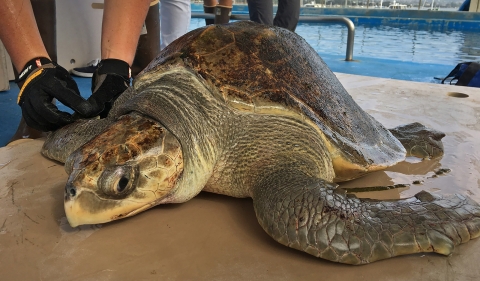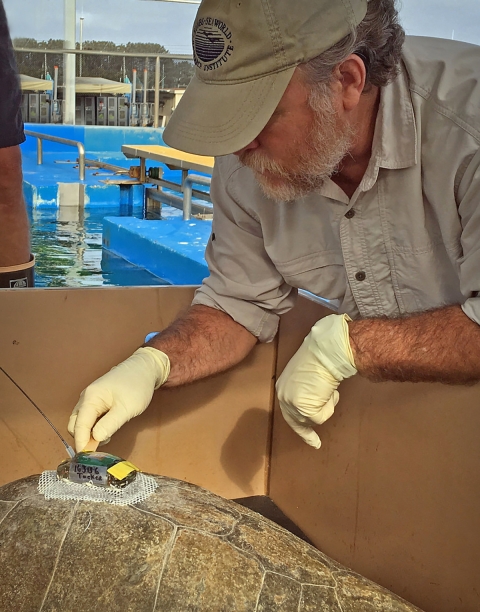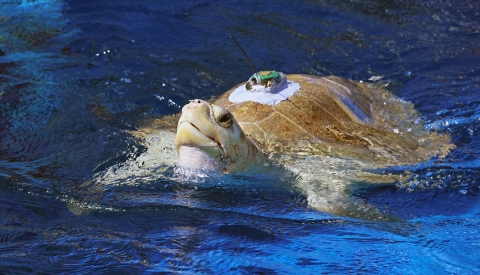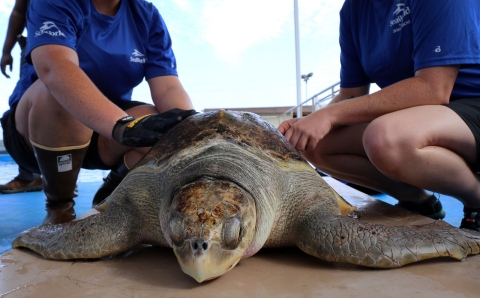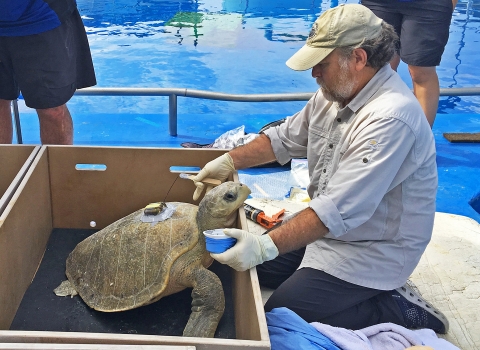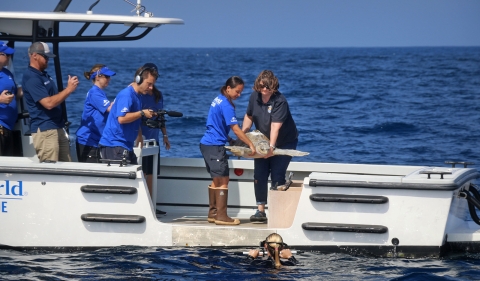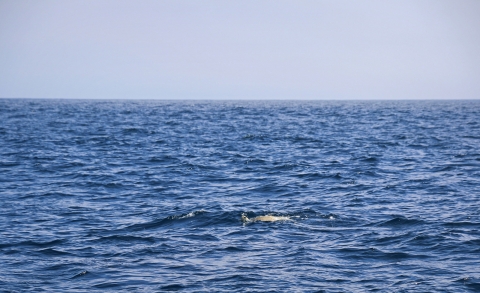Olive ridley sea turtles, named for their pale green color, are the smallest of all sea turtles. By no choice of their own, three olive ridleys have been on extended vacation at SeaWorld, San Diego, after being rescued in 2014 from near-death.
These three turtles washed up in separate locations along the coast of the Pacific Northwest. Each one lucky to be spotted, rescued and transported to Seaworld Rescue in San Diego by the U.S. Coast Guard.
Named Solstice, Lightning (both female) and Tucker (male), they then underwent a lengthy rehabilitation at SeaWorld. The road to recovery for each one was lengthy, challenging and at times seemingly hopeless.
All three turtles had been cold stunned and suffered from respiratory issues, which makes it impossible for them to dive and forage for food. But SeaWorld’s Rescue Team, in coordination with U.S. Fish and Wildlife Service, Oregon Coast Aquarium and Seattle Aquarium, made history with a new rehabilitation method.
The turtles, were placed into a large 12-foot deep, 115,000-gallon saltwater rehabilitation pool that allowed them space to become familiar with normal sea turtle behavior again.
"The way these organizations all work together to save these threatened turtles is inspiring," said Laura Todd, who leads sea turtle rescue and recovery on the West Coast for the U.S. Fish and Wildlife Service. "None of us would be able to recover listed species without teamwork and tremendous support from the public. These three turtles are living examples of successful partnerships across the entire Pacific Coast."
Slowly but surely the turtles began to dive, forage and maintain proper buoyancy. Earlier this year, SeaWorld’s aquarium experts and veterinarians agreed that the sea turtles were in healthy condition, of good weight, navigating through a water column and eating a variety of food types.
On September 11, Solstice, Lightning and Tucker were brought out to sea to live out the remainder of their lives in the wild. As they were released, each sea turtle showed off its unique personality for the last time. Lightning was energetic and couldn’t get back into the ocean fast enough, Solstice was calm and composed; and Tucker paddled along the surface, saying goodbye and soaking in his new home.
